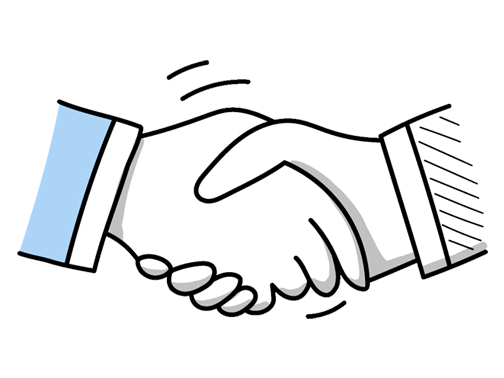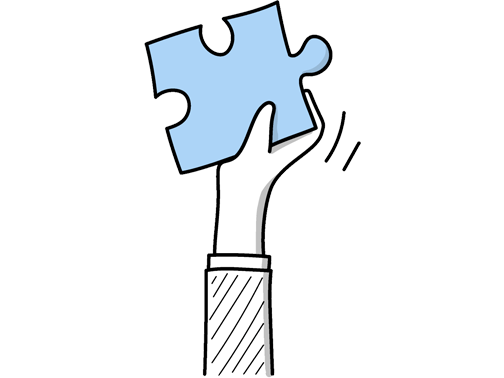Human Resources Director Interview Questions (2025 Guide)
Find out common Human Resources Director questions, how to answer, and tips for your next job interview
Practice Interviews Online - Identify your strengths and weakness in a realistic Human Resources Director mock interview, under 10 minutes
Practice Now »Human Resources Director Interview Questions
This question assesses your ability to drive and manage change, a key skill for a Human Resources Director. You need to clearly describe the situation, your leadership role, the actions you took, and the positive impact of the change.
Example: Certainly. In my previous role, I led a company-wide shift to flexible working. It involved guiding leadership through new policies and supporting teams during the transition. By fostering open communication and addressing concerns early, we not only maintained productivity but also improved employee engagement. This experience reinforced that thoughtful change management hinges on collaboration and clear dialogue.
Questions like this assess your commitment to staying informed about critical legal changes that impact company compliance and employee relations. You need to say you regularly monitor official legal sources and industry updates, engage with professional networks and training, and apply this knowledge by updating company policies to ensure compliance.
Example: I keep abreast of employment law by regularly reviewing updates from ACAS and government websites, ensuring I’m aware of any changes promptly. Staying active in HR forums and attending workshops helps me gain practical insights. I also make it a point to adapt our company policies quickly, like when GDPR changes required revisiting data handling procedures, ensuring compliance and minimizing risk.
Interviewers ask this question to see if you can manage conflicts effectively and maintain a positive work environment. You need to explain that you use active listening to understand all sides, communicate calmly to defuse tension, and set clear workplace expectations to prevent issues from escalating.
Example: When tensions arise, I focus on truly listening to everyone involved to get a full picture. Then, I encourage open, honest conversations to clear misunderstandings early on. For example, in a previous role, I set up regular check-ins within teams, which helped spot issues before they grew. Creating that space for dialogue often stops conflicts from spiraling and keeps the workplace collaborative.
This question assesses your ability to handle conflicts fairly and maintain trust within the organization. You need to explain how you set clear procedures that ensure everyone is heard, stay objective by gathering unbiased information, and encourage open dialogue to understand all viewpoints.
Example: When handling conflicts, I focus on setting clear guidelines everyone understands, ensuring conversations stay respectful and open. I listen carefully to all sides to keep things balanced and avoid letting personal views sway the outcome. Encouraging honest dialogue helps everyone feel heard and often leads to solutions that work well for the whole team. For example, in a previous role, this approach helped resolve a long-standing dispute quickly and fairly.
What they want to know is how you proactively address employee retention through concrete actions and measurable results. You need to clearly describe the specific initiatives you led, the positive impact they had on turnover rates, and how you collaborated with others to ensure success.
Example: In my previous role, I introduced a mentorship programme that paired new hires with experienced staff, which boosted early engagement and reduced turnover by 15% within a year. Working closely with team leaders, we also launched flexible working policies that addressed diverse employee needs, enhancing job satisfaction. These efforts were supported by regular feedback sessions, ensuring we adapted the initiatives based on real employee input.
Questions like this assess your conflict resolution skills and ability to maintain a positive work environment. You need to briefly describe the conflict context, explain how you mediated it with clear actions, and share the positive impact and lessons learned.
Example: In a previous role, two department heads disagreed over resource allocation, which was affecting team morale. I arranged a private meeting to listen to both sides, encouraged open dialogue, and helped them find common ground by focusing on shared goals. This led to a fair compromise, improved collaboration, and a stronger working relationship. It reinforced how important empathy and clear communication are in resolving workplace conflicts.
This question assesses your ability to anticipate future staffing needs and align them with business goals to ensure organizational efficiency. You need to explain how you analyze current workforce data, consider market trends, and collaborate with leadership to create flexible, strategic staffing plans.
Example: My approach to workforce planning focuses on understanding the organisation’s strategic goals and aligning talent needs accordingly. I analyse data trends, consult with department heads, and anticipate future skills requirements. For example, at my previous role, we adapted quickly to market shifts by reskilling staff and hiring selectively, ensuring we remained agile without overcommitting resources. It’s about balancing foresight with flexibility to support sustainable growth.
What they want to know is that you understand the importance of staying updated on UK labor laws to protect the company and employees. You need to say you actively monitor legal updates, develop clear policies based on these laws, and address compliance issues quickly to manage risks and uphold ethics.
Example: To ensure compliance, I stay current with UK employment legislation and translate those requirements into clear company policies. I work closely with teams to embed these standards in daily operations, conducting regular training and audits to identify risks early. When challenges arise, I prioritize open dialogue and ethical decision-making, ensuring both the letter and spirit of the law guide our actions—like handling grievances sensitively while upholding fairness.
This interview question assesses your ability to integrate HR functions with the company’s strategic direction to drive overall success. You need to explain how you analyze business goals first, then design HR strategies that support those goals, and finally measure their impact on performance using clear metrics.
Example: To align HR with business goals, I start by immersing myself in the company’s vision and challenges. Then, I craft HR initiatives—like targeted leadership development or retention programs—that directly support those priorities. Tracking metrics such as employee engagement or turnover rates helps show the real impact. At my last role, tying talent strategies to growth plans led to a 15% productivity boost within a year, which made the connection clear and tangible.
What they want to understand is how you use data and strategic alignment to evaluate and improve your hiring processes. You need to explain that you track metrics like time-to-fill, quality of hire, and cost-per-hire to measure success, align recruitment goals with business objectives, and continuously refine your strategies based on those insights.
Example: Measuring success starts with tracking key indicators like time-to-fill and quality of hire, ensuring they support the company’s wider goals. I regularly review these metrics with stakeholders to identify gaps and adjust strategies. For example, by analyzing candidate feedback and hiring manager satisfaction, we continuously refine the process to attract the right talent efficiently, keeping our approach flexible as business needs evolve.
This question assesses your ability to create and maintain an ethical work environment. You need to explain how you promote transparency through training, enforce clear policies consistently, and encourage accountability by recognizing ethical behavior.
Example: Creating an ethical workplace starts with clear, open conversations about what’s expected from everyone. I ensure that policies are fair and consistently applied, so people know where they stand. It’s equally important to encourage ownership of actions and recognize integrity in daily decisions. For example, in my previous role, we held regular forums where employees could discuss ethical dilemmas openly, which really helped build trust across teams.
Hiring managers ask this to understand your conflict resolution skills and ability to maintain a positive work environment. You need to say you listen to all parties involved, seek to understand the root cause, and work collaboratively toward a fair and constructive solution.
Example: When conflicts arise, I focus on understanding each person’s perspective by listening carefully and creating a calm space for dialogue. I encourage open communication to identify underlying issues and find common ground. For example, in a previous role, facilitating a face-to-face chat helped two team members move past a misunderstanding and rebuild trust, strengthening the whole team in the process.
Employers ask this question to understand how you evaluate the impact of HR programs on the organization’s goals. You need to explain that you use specific metrics like employee engagement, turnover rates, and performance improvements to assess effectiveness.
Example: I look at how HR initiatives impact both people and business results—engagement scores, turnover rates, and productivity changes tell a clear story. For example, after launching a new training program, we tracked promotion rates and employee feedback to see real growth. It’s about combining data with genuine conversations to understand what’s working and where to adapt.
This question helps the interviewer understand how self-aware and adaptable you are as a leader. You need to explain your core leadership style and give a brief example of how and why it has changed to meet new challenges or team needs.
Example: Over time, I’ve shifted from a more directive approach to one that’s collaborative and empathetic. Early in my career, I focused on clear goals and structure, but now I prioritise listening and empowering teams. For example, by encouraging open dialogue, I’ve seen better engagement and innovative solutions, which ultimately strengthens both individual growth and organisational success.
This question assesses your ability to leverage data for informed decision-making and long-term planning. You need to say that you use data analytics to identify trends, measure outcomes, and make evidence-based decisions that align with organizational goals.
Example: Data analytics is central to shaping strategy. It helps us identify trends in workforce engagement, predict staffing needs, and measure the impact of HR initiatives. For example, by analyzing turnover data, we can proactively address retention challenges before they escalate. Using data allows decisions to be informed and targeted, ensuring we align our people strategies with the organisation’s goals effectively.
Hiring managers ask this to assess your leadership and problem-solving skills in managing team productivity. You need to explain that you identify root causes, provide clear feedback, offer support and development opportunities, and set measurable improvement goals.
Example: When I notice underperformance, I focus on understanding the root cause through open conversations. It’s important to listen and support rather than jump to conclusions. For example, once a team member was struggling due to unclear goals, so we clarified expectations and set small milestones. This approach helps build trust and encourages improvement naturally, making the team stronger overall.
Hiring managers ask this to see if you can recognize and handle ethical challenges responsibly, which is crucial for maintaining trust and integrity in the organization. You should clearly describe the ethical issue you identified, explain the steps you took to address it transparently, and share the positive outcome and lessons learned.
Example: In a previous role, I noticed a manager regularly taking credit for team members’ work, which was affecting morale. I addressed it by having an open conversation with him about fairness and recognition. We then introduced a peer-nomination system to highlight individual contributions. This not only restored trust but also reinforced a culture of transparency and respect across the team. It was a strong reminder of how small changes can make a big ethical impact.
Hiring managers ask this question to see if you can diplomatically resolve disputes and maintain a productive work environment. You need to explain how you listen impartially to both sides, implement fair solutions that address the root causes, and keep communication respectful to build lasting relationships.
Example: When conflicts arise between management and staff, I start by genuinely understanding both sides, ensuring everyone feels heard. I focus on identifying the root cause rather than just the symptoms. Then, I work towards solutions that are fair and practical, aiming to rebuild trust and keep relationships strong. In a previous role, this approach helped turn a tense situation into a collaborative effort that improved overall team morale.
Employers ask this to understand how you proactively source and engage high-quality candidates in a competitive market. You need to highlight your use of targeted recruiting, strong employer branding, and creating a positive candidate experience to attract top talent.
Example: To attract top talent, I focus on building a strong employer brand that highlights our culture and growth opportunities. I’ve found that showcasing real employee stories and promoting a genuine commitment to development really resonates. Partnering with universities and using targeted social media campaigns also helps us reach diverse, skilled candidates. Creating an environment where people feel valued and challenged naturally draws the best.
What they want to understand is how you recognize and respond to external changes that affect HR strategy, ensuring the organization adapts effectively. In your answer, explain the external factor you identified, describe the steps you took to adjust the strategy, and highlight the positive results of that change.
Example: Certainly. When the pandemic hit, we quickly realized that remote work wasn’t just a perk but a necessity. By closely monitoring government guidelines and employee feedback, we reshaped our policies to support flexible working and mental well-being. This shift not only maintained productivity but also strengthened trust across the organization, showing that adapting with empathy can drive real results.
Questions like this assess your ability to lead and grow an effective HR team that aligns with organizational goals. You need to explain how you set clear, measurable objectives, provide ongoing development through training and mentorship, and promote a collaborative, accountable team culture.
Example: I focus on setting clear objectives so everyone knows what success looks like, and I make sure there’s ongoing support through regular coaching and skills development. Encouraging open communication and accountability helps build a team that learns from each other and continuously improves. For example, in my last role, we introduced monthly knowledge-sharing sessions that boosted both collaboration and performance across the HR department.
This question assesses your ability to lead and sustain a high-performing team. You need to explain how you use recognition, balanced workloads, clear deadlines, and open communication to keep your team motivated and productive.
Example: I focus on creating an open environment where everyone feels valued and heard. Regular check-ins help me understand individual needs and keep goals clear. Encouraging collaboration and recognizing achievements naturally boosts morale. For example, introducing peer-led workshops not only develops skills but also fosters a sense of ownership and connection, which keeps the team engaged and consistently productive.
This interview question helps assess your problem-solving skills and ability to manage difficult recruitment scenarios. You need to describe the challenges you faced, explain the strategies you used to find and select candidates, and highlight the positive results of filling the position.
Example: Certainly. We once had to recruit a senior IT security manager during a highly competitive market. Understanding the niche skills required, we broadened our outreach through industry networks and tailored our employer branding. After careful assessment, we found a candidate who not only fit the role but also brought fresh ideas, which strengthened our cyber resilience and boosted team confidence significantly.
Questions like this assess your understanding of privacy, trust, and ethical responsibility in HR. You need to say that you strictly protect sensitive data by following company policies and legal guidelines, ensuring confidentiality at all times.
Example: Handling confidential information requires a careful balance of trust and diligence. I ensure sensitive data is only shared with those who need to know and stored securely to prevent breaches. For example, when managing employee records, I implement strict access controls and regularly review protocols. Maintaining discretion not only protects individuals but also upholds the company’s integrity and fosters a culture of confidence.
Questions like this help interviewers determine if you understand the importance of cultural fit in maintaining a cohesive and productive workplace. You need to explain that you evaluate alignment with company values by asking about relevant past experiences, assess communication and teamwork skills, and explore how candidates adapt to different work environments.
Example: When considering if someone fits our company culture, I look beyond their skills to how they connect with our core principles and work style. It’s about watching how they engage in conversations, their openness to new ideas, and how well they collaborate during the interview. For example, I once saw a candidate adapt quickly when asked to solve an unexpected problem, showing both flexibility and alignment with our team’s dynamic approach.
Ace your next Human Resources Director interview with even more questions and answers
Common Interview Questions To Expect
The interviewer is looking for information on how you found out about the job opening. You can answer by mentioning a job board, referral, company website, or networking event.
Example: I actually came across this position on a popular job board while I was actively looking for new opportunities in the HR field. The job description really caught my eye and I felt like my experience aligned well with what the company was looking for. I'm excited to have the chance to interview for this role.
The interviewer is looking for a candidate who has done their research on the company, understands its values, goals, products/services, and can demonstrate how their skills and experience align with the company's needs.
Example: I've done my homework on your company and I'm impressed by your commitment to innovation and employee development. I see that you offer a wide range of products/services in the tech industry, which aligns perfectly with my background in HR. I believe my experience can help support your company's growth and success.
The interviewer is looking for examples of how you manage stress and stay productive in high-pressure situations. Be sure to provide specific examples and demonstrate your ability to handle stress effectively.
Example: I handle pressure by prioritizing tasks, staying organized, and communicating effectively with my team. For example, during a recent project deadline, I created a detailed timeline, delegated tasks, and held regular check-ins to ensure we stayed on track. This approach helped us successfully meet the deadline while maintaining a positive work environment.
The interviewer is looking for examples of how you prioritize tasks, delegate responsibilities, and manage your time effectively. Be prepared to provide specific examples of times when you successfully handled multiple responsibilities simultaneously.
Example: Yes, I am definitely able to handle multiple responsibilities at once. In my previous role as a Human Resources Director, I was responsible for managing recruitment, employee relations, and training programs all at the same time. I prioritized tasks based on deadlines, delegated responsibilities to my team members, and used time management techniques to ensure everything was completed efficiently.
The interviewer is looking for honesty, accountability, problem-solving skills, and the ability to learn from mistakes. Answers should include a specific example, the actions taken to rectify the mistake, and any lessons learned.
Example: Yes, I once accidentally sent out an email with incorrect information to all employees. I immediately sent out a follow-up email with the correct information and apologized for the mistake. I learned the importance of double-checking all communications before sending them out.
Company Research Tips
The company's official website is a goldmine of information. Look for details about the company's history, mission, vision, and values. Pay special attention to the 'About Us', 'Our Team', and 'News' or 'Blog' sections. These can provide insights into the company culture, key personnel, and recent developments or initiatives. For the role of Human Resources Director, understanding the company's culture and values is particularly important, as these will likely influence HR policies and practices.
Tip: Don't just skim through the website. Take notes and think about how the information you find relates to the role you're applying for. Look for any challenges the company might be facing that you could address in your role.
Social media platforms can provide a more informal view of the company. LinkedIn can provide information about the company's size, industry, and employee demographics. Twitter, Facebook, and Instagram can give insights into the company's public image and how it interacts with its customers or clients. For a Human Resources Director role, understanding the company's public image and employee demographics can be useful in shaping HR strategies.
Tip: Look at the comments and reviews on the company's social media posts. This can give you a sense of how the company is perceived by the public and its employees.
Understanding the industry in which the company operates can give you a competitive edge. Look for recent news articles or reports about the industry in the UK. This can help you understand the challenges and opportunities the company may be facing. As a Human Resources Director, understanding these industry trends can help you develop HR strategies that align with the company's business goals.
Tip: Use reliable news sources and industry reports. Google Alerts can be a useful tool for keeping up-to-date with industry news.
Understanding the company's competitors can provide insights into the company's position in the market. Look for information about the competitors' products, services, and strategies. For a Human Resources Director role, understanding the competitors can help you develop HR strategies that give the company a competitive edge.
Tip: Don't focus solely on the competitors. The goal is to understand how the company differentiates itself from its competitors.
What to wear to an Human Resources Director interview
- Opt for a professional suit in neutral colours
- Pair with a crisp, clean shirt or blouse
- Choose polished, conservative shoes
- Minimal, tasteful jewellery is appropriate
- Ensure your outfit is clean and wrinkle-free
- Avoid flashy or distracting patterns
- Keep makeup and perfume/cologne subtle
- Ensure your hair is neat and professional
- Carry a professional bag or briefcase
- Wear a watch to show punctuality





